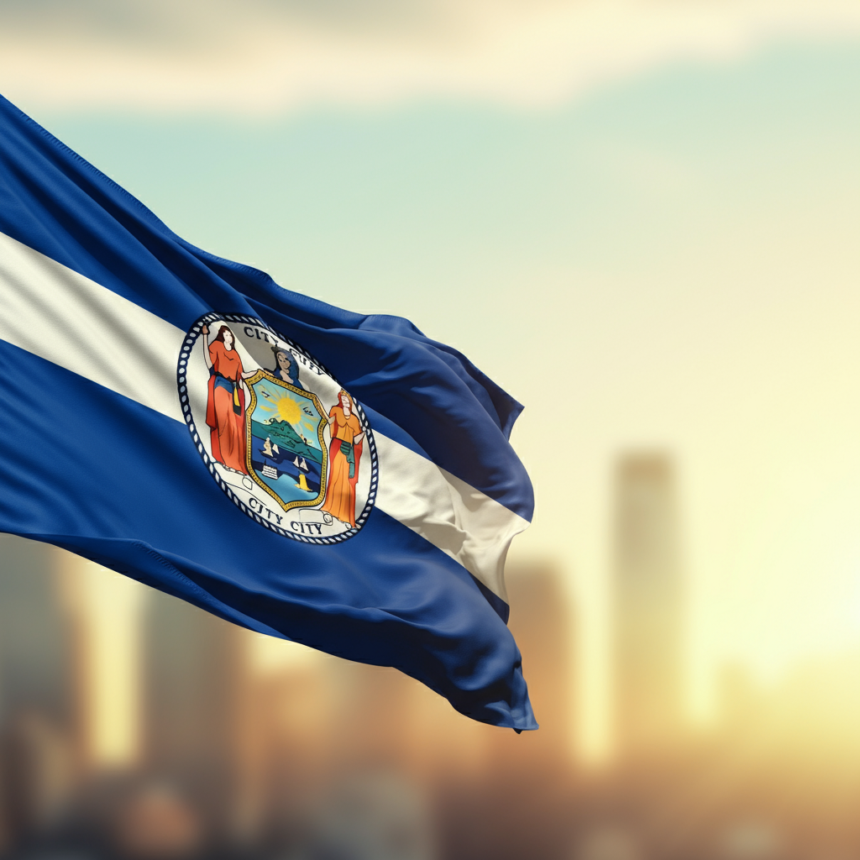The NYC Flag A Look at Its History and Symbolism
The New York City Nyc flag might not be the first symbol that comes to mind when you think about the bustling metropolis, but it is packed with meaning, history, and a connection to the vibrant and diverse community it represents.
Whether you’re a lifelong New Yorker, a history buff, or just passing through the Big Apple, this deep-dive into the NYC flag reveals fascinating details about its origins, design, and significance.
A Brief History of the NYC Flag
The story of the NYC flag begins in 1915. It was created as part of the celebration of New York City’s 250th anniversary. Before this, there was no official flag to represent the city, a surprising fact considering its global influence even then. The design was heavily influenced by the region’s past, paying homage to its Dutch colonial roots, and it has remained mostly unchanged for more than a century.
The city’s Board of Aldermen officially adopted the NYC flag on June 24, 1915, solidifying its place as a unifying emblem for the sprawling metropolis. The flag honors the city’s European settlement while reflecting the aspirations of modern New York.
What Does the NYC Flag Look Like
Although simple at first glance, the NYC flag’s design is loaded with meaning. It consists of three vertical stripes of blue, white, and orange, arranged from left to right. Each color holds historical and cultural significance that links New York City residents to their rich history and layered identity.
Colors and Their Meaning
- Blue represents vigilance, justice, and perseverance. It also serves as a nod to the Dutch origins of New Amsterdam, the settlement founded in the 17th century that later became part of New York City.
- White symbolizes purity and peace, a testament to the ideals that govern the city’s ethos.
- Orange is a tribute to the Dutch House of Orange-Nassau, symbolizing courage and resilience.
The NYC Coat of Arms
Superimposed in the center of the flag is the city’s official seal, a rich tapestry of design elements. The seal features an eagle, windmill sails, barrels, a beaver, and two figures – a Native American and a colonial settler. Together, these symbols tell the story of New York City’s commercial success, multicultural roots, and aspirations.
Breaking Down the Seal
- Eagle: A national symbol of the United States, representing strength and freedom.
- Beavers and Barrels: These acknowledge the city’s history as a hub for trade and commerce, specifically fur and grain trading in the colonial era.
- Windmill Sails: A direct reference to the Dutch settlers who established New Amsterdam.
- Native American and Settler Figures: These represent the cooperation and complex relationships between Indigenous communities and European settlers in the city’s early days.
NYC Flag’s Role in Everyday Life
While the flag may not be as widely recognized as landmarks like the Statue of Liberty or the Empire State Building, its presence is undeniable in various formal and ceremonial contexts.
- City Government: The flag serves as an official emblem for government agencies and the Mayor’s Office, symbolizing authority and trust.
- Civic Pride: Displayed at City Hall and public monuments, the flag reminds residents of their identity, history, and resilience.
- Cultural Events: City celebrations, parades, and commemorations often include the flag to bring together diverse communities under one shared symbol.
Evolution of the NYC Flag Over Time
Remarkably, the NYC flag has undergone few changes since its official adoption. However, one significant update took place in 1977 when a modernized version of the city’s seal was officially incorporated. This updated design highlighted inclusivity by featuring elements that better reflect the diversity and complexity of New York City’s people and history.
The flag continues to be a living, breathing representation of the city it stands for. Each of its components speaks to the resilience of New Yorkers, their achievements, and their continued ambitions for the future.
Why Knowing Your City’s Flag Matters
You might wonder why anyone should care about their city’s flag in an era dominated by endless streams of digital content and global news. The truth is, symbols like flags bind us to our communities. They remind us of where we come from and what we stand for.
The NYC flag is more than just fabric and colors; it’s a repository of history, struggles, milestones, and cultural narratives. From its Dutch roots to its modern-day symbolism, the flag tells the story of a city that has always been a crossroads of cultures, commerce, and innovation.
Exploring NYC’s Identity Through Its Symbolism
Reading the NYC flag is like reading the city itself. Its rich symbolism takes us back through time while reinforcing modern New York’s values of diversity, justice, and ambition. It represents the soul of the city, one that has thrived through challenges to become a global beacon of opportunity.
Discover More About New York City
The NYC flag is just one piece of the city’s unique identity. With so much history, culture, and innovation packed into its five boroughs, there’s always something new to uncover.
Curious to learn more about New York City’s rich past and vibrant present? Check out other features in our blog that explore the stories, landmarks, and people that make NYC truly one of a kind.





